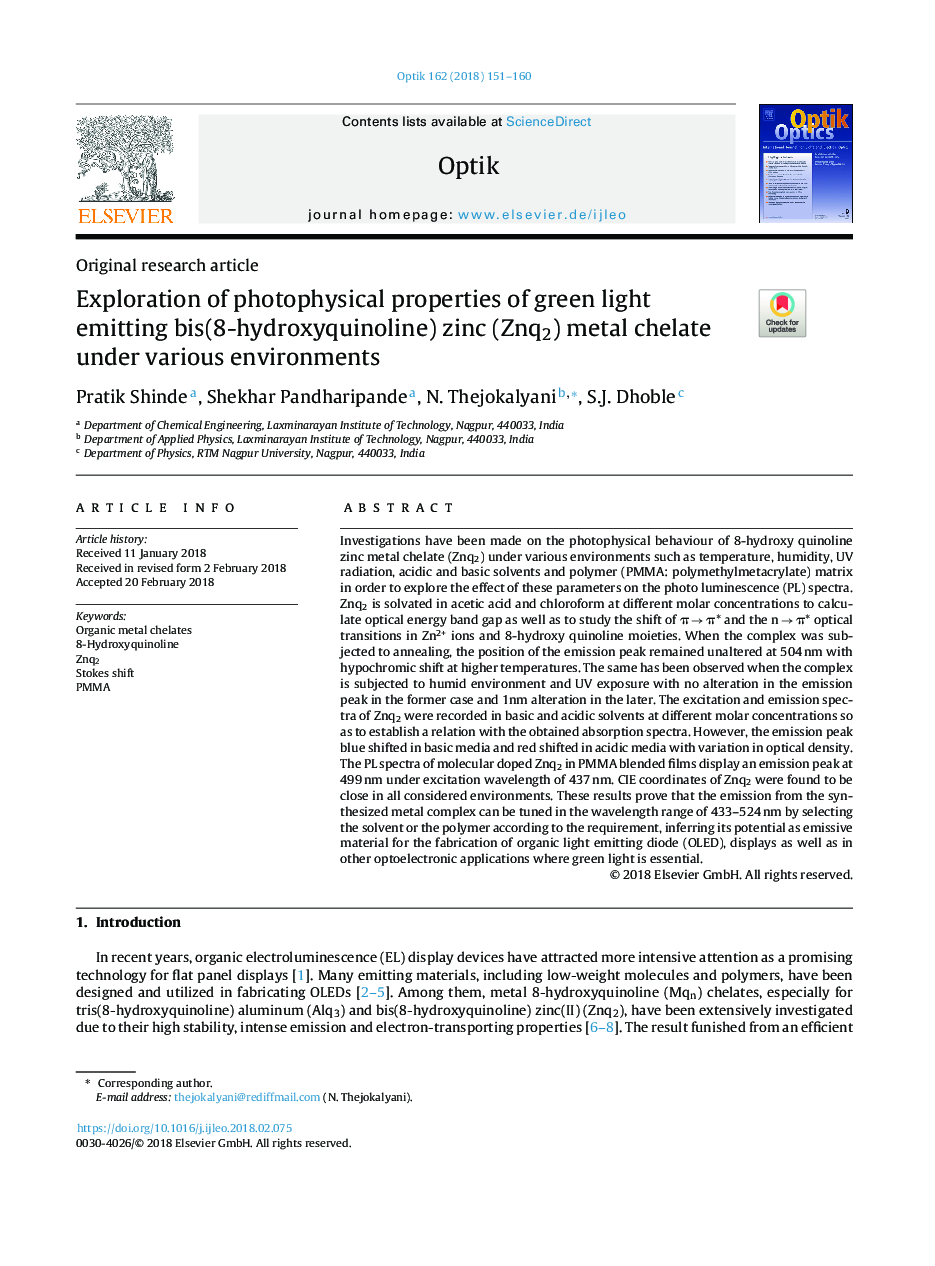| کد مقاله | کد نشریه | سال انتشار | مقاله انگلیسی | نسخه تمام متن |
|---|---|---|---|---|
| 7224039 | 1470565 | 2018 | 10 صفحه PDF | دانلود رایگان |
عنوان انگلیسی مقاله ISI
Exploration of photophysical properties of green light emitting bis(8-hydroxyquinoline) zinc (Znq2) metal chelate under various environments
دانلود مقاله + سفارش ترجمه
دانلود مقاله ISI انگلیسی
رایگان برای ایرانیان
کلمات کلیدی
موضوعات مرتبط
مهندسی و علوم پایه
سایر رشته های مهندسی
مهندسی (عمومی)
پیش نمایش صفحه اول مقاله

چکیده انگلیسی
Investigations have been made on the photophysical behaviour of 8-hydroxy quinoline zinc metal chelate (Znq2) under various environments such as temperature, humidity, UV radiation, acidic and basic solvents and polymer (PMMA: polymethylmetacrylate) matrix in order to explore the effect of these parameters on the photo luminescence (PL) spectra. Znq2 is solvated in acetic acid and chloroform at different molar concentrations to calculate optical energy band gap as well as to study the shift of Ïâ¯ââ¯Ï* and the nâ¯ââ¯Ï* optical transitions in Zn2+ ions and 8-hydroxy quinoline moieties. When the complex was subjected to annealing, the position of the emission peak remained unaltered at 504â¯nm with hypochromic shift at higher temperatures. The same has been observed when the complex is subjected to humid environment and UV exposure with no alteration in the emission peak in the former case and 1nm alteration in the later. The excitation and emission spectra of Znq2 were recorded in basic and acidic solvents at different molar concentrations so as to establish a relation with the obtained absorption spectra. However, the emission peak blue shifted in basic media and red shifted in acidic media with variation in optical density. The PL spectra of molecular doped Znq2 in PMMA blended films display an emission peak at 499â¯nm under excitation wavelength of 437â¯nm. CIE coordinates of Znq2 were found to be close in all considered environments. These results prove that the emission from the synthesized metal complex can be tuned in the wavelength range of 433-524â¯nm by selecting the solvent or the polymer according to the requirement, inferring its potential as emissive material for the fabrication of organic light emitting diode (OLED), displays as well as in other optoelectronic applications where green light is essential.
ناشر
Database: Elsevier - ScienceDirect (ساینس دایرکت)
Journal: Optik - Volume 162, June 2018, Pages 151-160
Journal: Optik - Volume 162, June 2018, Pages 151-160
نویسندگان
Pratik Shinde, Shekhar Pandharipande, N. Thejokalyani, S.J. Dhoble,